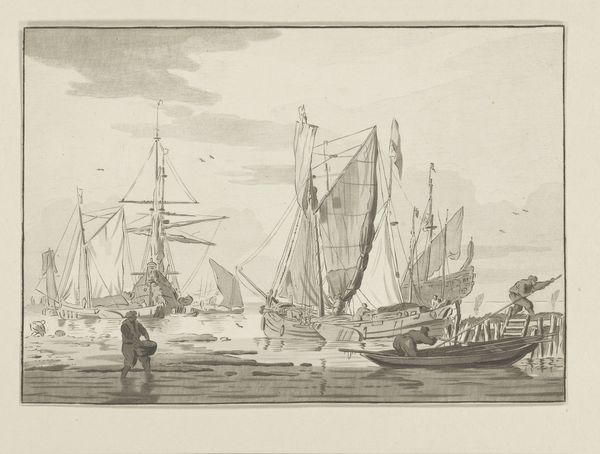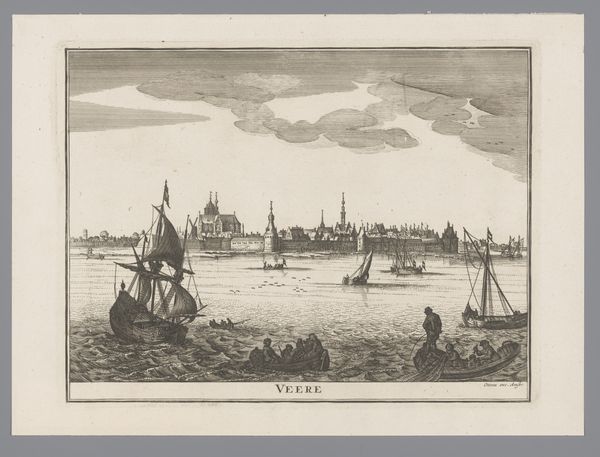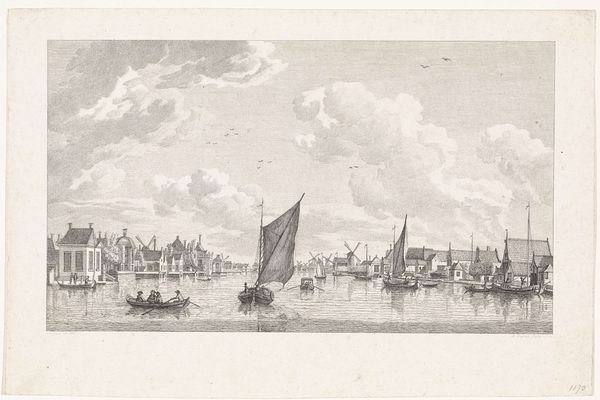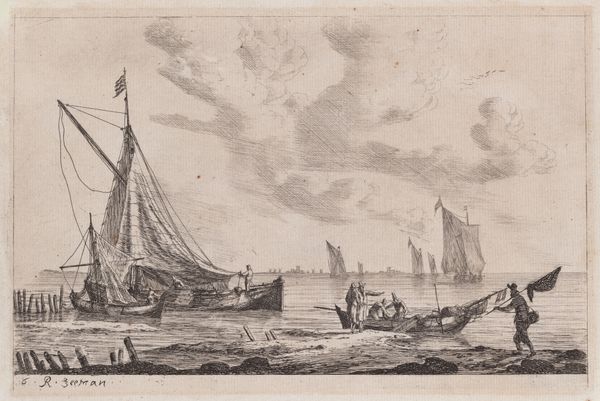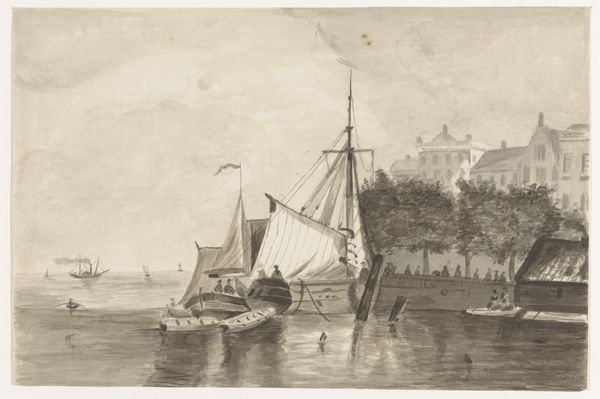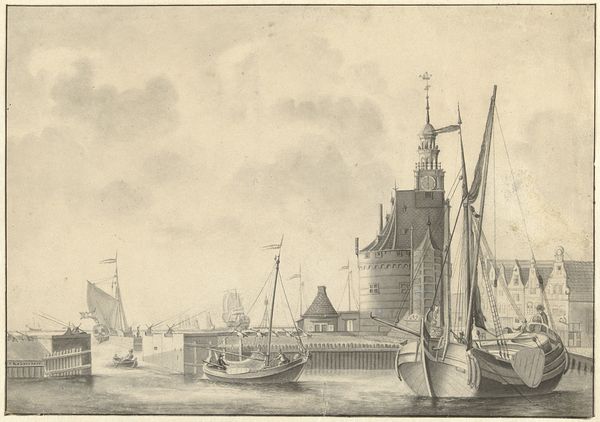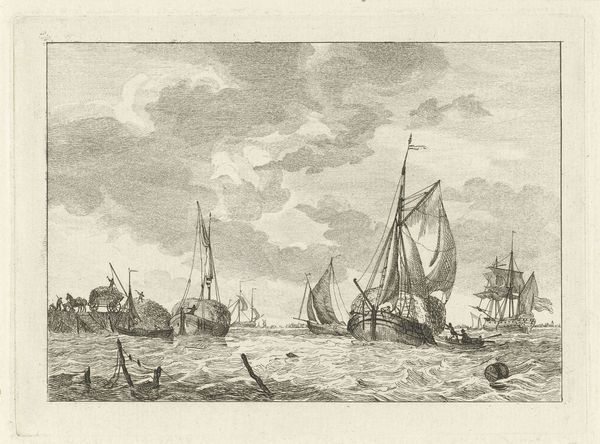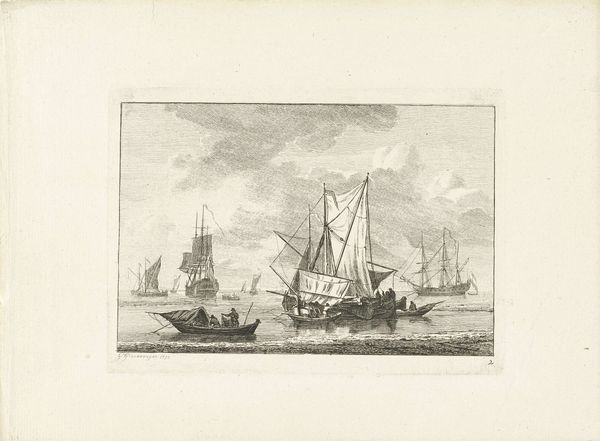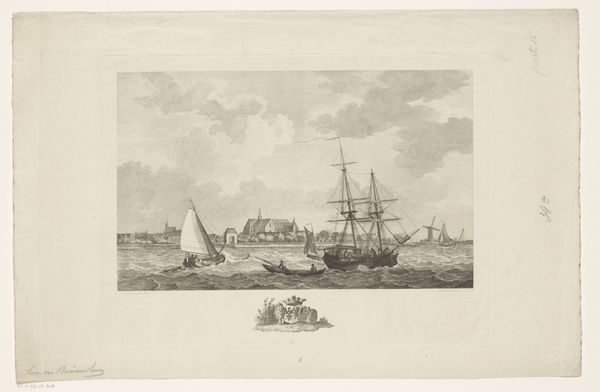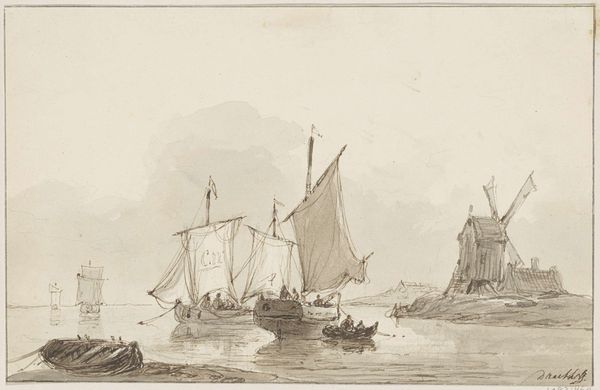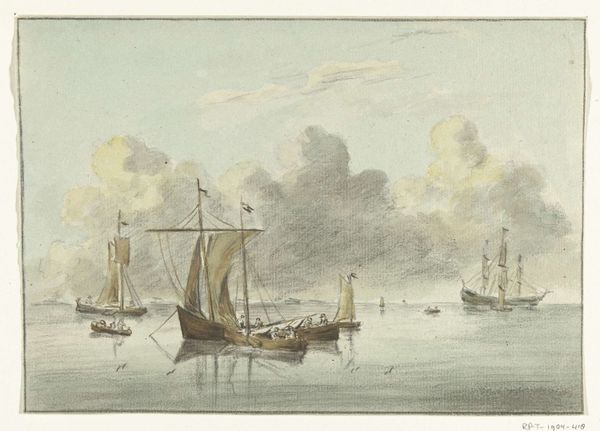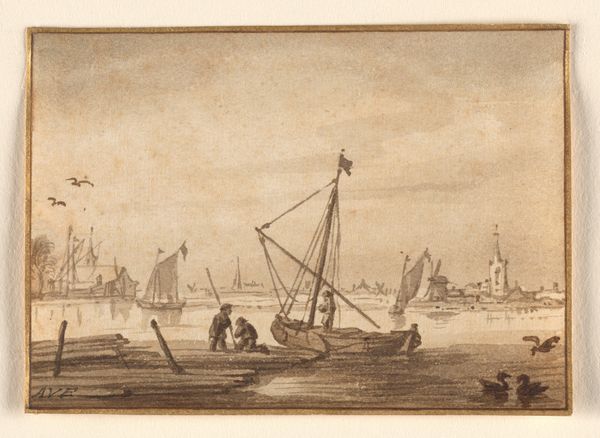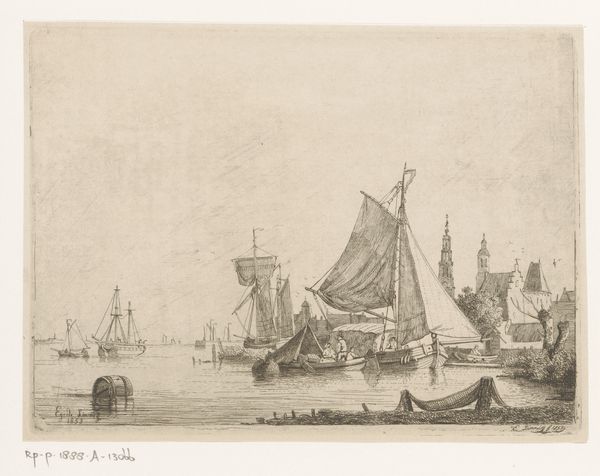
print, engraving
#
dutch-golden-age
# print
#
landscape
#
romanticism
#
cityscape
#
engraving
Dimensions: height 208 mm, width 235 mm
Copyright: Rijks Museum: Open Domain
Editor: This is "Zeilschepen en een sloep voor Dordrecht," or "Sailboats and a Sloop off Dordrecht," an engraving made around 1801 by Izaak Jansz. de Wit. It's a lovely, detailed scene. What do you see in this piece? Curator: I see more than just sailboats; I see a visual document of a complex social and economic system. This isn’t just a pretty picture of boats; it represents commerce, connection, and likely, for some, a means of survival. Who is on those boats? Are they merchants, laborers, families migrating for opportunities? These seemingly tranquil scenes often mask inequalities in access and resources. Editor: I didn't think of it that way at all! I was mostly looking at the lines and the light. Are you saying that art like this can tell us something about wealth and class? Curator: Absolutely! Consider the relationship between the cityscape in the background and the boats in the foreground. Dordrecht was a thriving port. The city benefited enormously from maritime trade and overseas expansion. So, while we admire the artistic skill, we also need to critically assess whose story is being told, and whose is being omitted. How might we understand the position of people of colour within the 18th-century Dutch trade networks? Editor: That makes me look at it differently. It seems like a romantic depiction on the surface, but there’s probably more going on under the surface than I realized. Curator: Exactly! Art isn't created in a vacuum; it's always speaking to or about the world around it. Thinking about the power dynamics represented here – the beneficiaries and the dispossessed – enriches our understanding and challenges our assumptions. Editor: I'll never look at a seascape the same way again. Thanks for broadening my perspective. Curator: My pleasure. Hopefully, you'll remember that every artwork is embedded within wider social and historical currents that shape its production, its reception, and ultimately, its meaning.
Comments
No comments
Be the first to comment and join the conversation on the ultimate creative platform.
